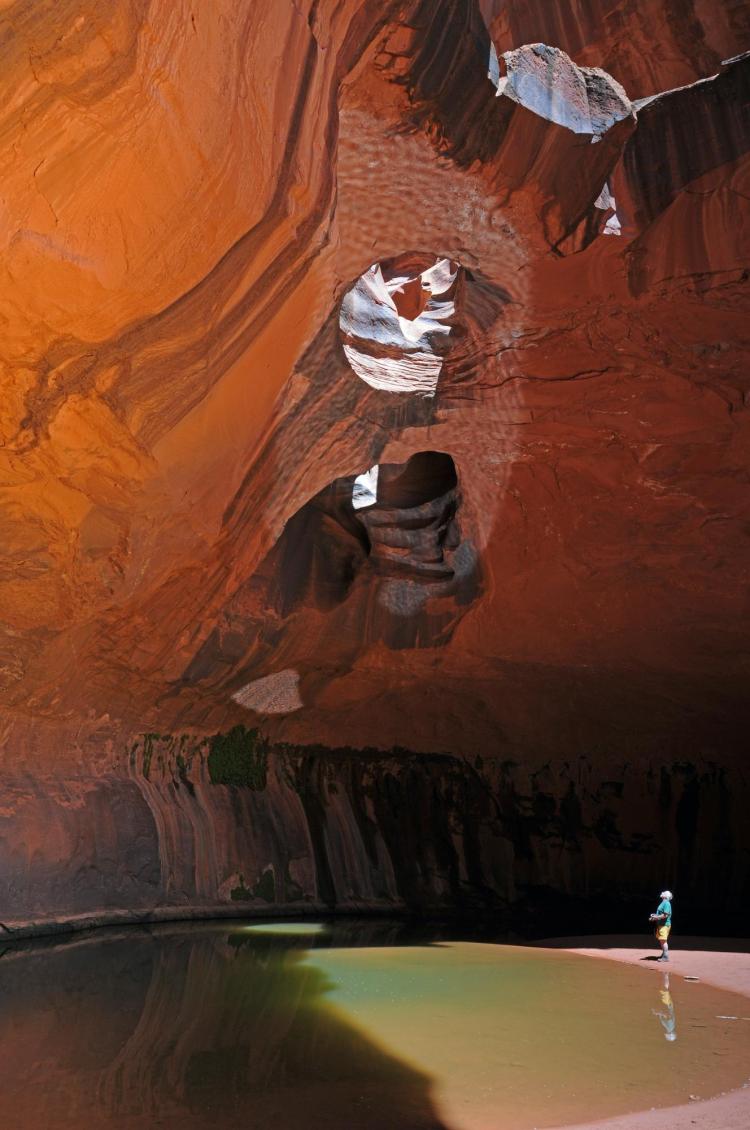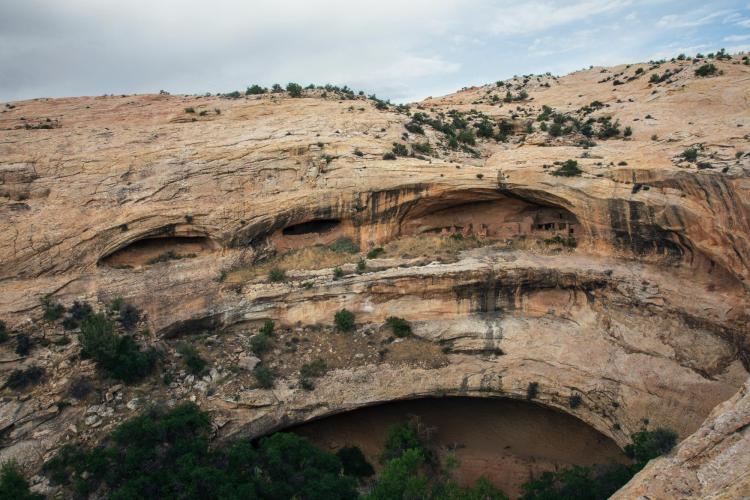The value of national monuments, national parks and wilderness areas
Just as we have learned that the cost of freedom is constant vigilance, we must accept the notion that the lands set aside for forever must continually be guarded
Five people had set out on a trek, parts of it a climb, to view a pot that was resting in the Bears Ears National Monument where it had been left as the Ancient Puebloans abandoned their homelands, around 1280 CE.

Above: Jeff Mitton in the Golden Cathedral in the Grand Staircase. Photo by Bill Bowman. At the top of the page: An ancient pot, burned and cracked. Photo by Jeff Mitton.
When we arrived, each of us took several minutes alone to view the pot and its surroundings. The pot was minutely textured to release heat efficiently; it was stained by smoke around the base and it had a crack in its side.
This pot was used for cooking, and when it cracked, it was retired to the role of a storage vessel, buried to the top in soft soil with a snug-fitting top to frustrate small mammals searching for food.
It is believed that this pot was left behind when the Ancient Puebloans vacated Bears Ears and Comb Ridge to escape the Great Drought of 1275-1300, which caused crop failure and depletion of game. This was a massive exodus that effectively ended the culture of Ancient Puebloans, leaving thousands of historical sites.
We passed homes, granaries and kivas on our way to the pot. It was eerie, walking amongst the physical remains of a civilization that had decided they had to leave to avoid starvation. Memorable scenery, the hike and climb, all the structures and the pot contributed to a profound experience that I treasure today.
President Clinton established the Grand Staircase of the Escalante National Mount (1.88 million acres) in 1996. President Obama established the Bears Ears National Monument (1.35 million acres and 100,000 archeological sites) in 2016. These were our two largest National Monuments until President Trump slashed Bear Ears by 85% and the Grand Staircase by 47% with the intent of inviting mining, drilling, fracking and grazing.
Just 11 months later, 380 acres of Comb Ridge in Bears Ears were sold to the highest bidder—public land had become private property, and the land grab had begun. On Oct. 8, 2021, President Biden reestablished the original boundaries of Bears Ears and Grand Staircase.
Why are national monuments, as well as national parks and wilderness areas, so important? Since the establishment of Yellowstone, Sequoia and Yosemite as the first three National Parks (1872 to 1890), America's writers, photographers and naturalists have recognized that America has unique scenic areas that profoundly impact people that visit, hike and linger.
My experience with the pot is one of many experiences in public lands that have made my life richer.
Yosemite National Park is known for its incredible rock formations, thundering waterfalls and wide vistas, but it also serves as reminder of a colossal blunder in the administration of a national park.
John Muir, one of the proponents of declaring Yosemite as a national park, felt embittered that a substantial proportion of the land set aside for the park was put under the control of a company that intended to dam the Tuolumne River to generate electricity and provide water to San Francisco. The company also prohibited public access to the reservoir that fills Hetch Hetchy Valley.
John Muir repeatedly made the point that the land set aside had two valleys, equally grand and majestic. But none of us has ever seen and will never see Hetch Hetchy, in Yosemite National Park. That is a tragedy.

Butler Wash ruin, in the Comb Ridge area of Bears Ears, was abandoned by Ancient Puebloans around 1280 CE. Photo by Jeff Mitton.
We have learned that once industry is given access to public land, the land no longer functions as a public resource. We need to be wary with the idea of including industry or agriculture in multiuser agreements for public lands. No one would want to camp on mine spoils, or near a drilling rig, or in a forest that has been clear cut, or in a pasture that has been grazed by thousands of sheep.
When we protect land by declaring it to be a national monument, or a national park, or a wilderness, the intent is that the lands will be protected forever, for all Americans. But just as we have learned that the cost of freedom is constant vigilance, we must accept the notion that the lands set aside for forever must continually be guarded.
Just recently, we nearly lost major tracts of our two largest national monuments and in a blink a 380-acre parcel of Comb Ridge became the private possession of a wealthy landowner. Public lands are precious, and Hetch Hetchy serves as an infuriating example of the permanent loss that can be suffered by a lapse in proper management of public lands.
I want my grandchildren and their grandchildren to feel the exhilaration and renewal of visiting such glorious sites as homes of the Ancient Puebloans in Bears Ears National Monument and the fantastic canyons and cliffs and mesmerizing vistas in Grand Staircase of the Escalante National Monument.

